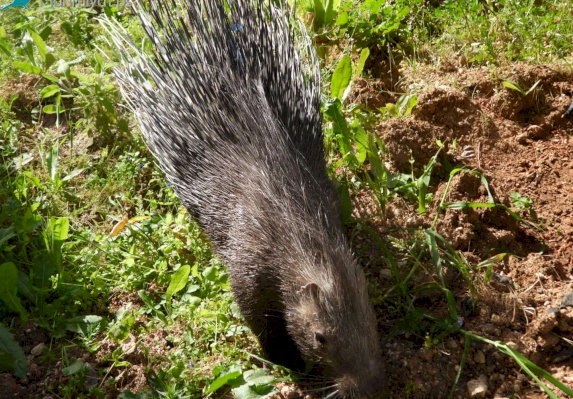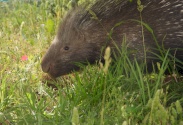Indian crested porcupine
© All rights reserved by www.mahmiyat.ps
The Indian crested porcupine belongs to the hystricidae family in the rodentia order. It is the largest rodent can be found in this region, easily recognized by its long black and white thorns. It is more than 3 times bigger than the hedgehog, another thorny mammal can be found in the area, and creates a rattling sound, sourced in the thorns. In most cases we could see the ground turned upside down after a porcupine visit, looking for bulbs and plant roots. Another noticeable sign for the porcupine activity is its feces collected together and may even be "glued" together in a braid form. The Indian crested porcupine is nocturnal and can also be seen during early evening and dawn, feeds of plants, fruit, bulbs and roots and also piles of organic human garbage (therefor, a good way of getting rid of its disturbance is simply closing the garbage bins). It is one of not so many known species that mate not only for reproduction but also for relationship maintenance. The porcupine is monogamous and both the parents take care of the babies (1-4 each birth, once a year in the spring). The Indian crested porcupine is found from turkey in the west all the way to India and Sri Lanka, and Arabia in the south. It can be found both in Mediterranean and desert habitats in our region, without any affiliation to human activity.
Conservation status- least concern.
Sites: Beitillu, Umm at-Tut, Wadi Al-Quff nature reserves


